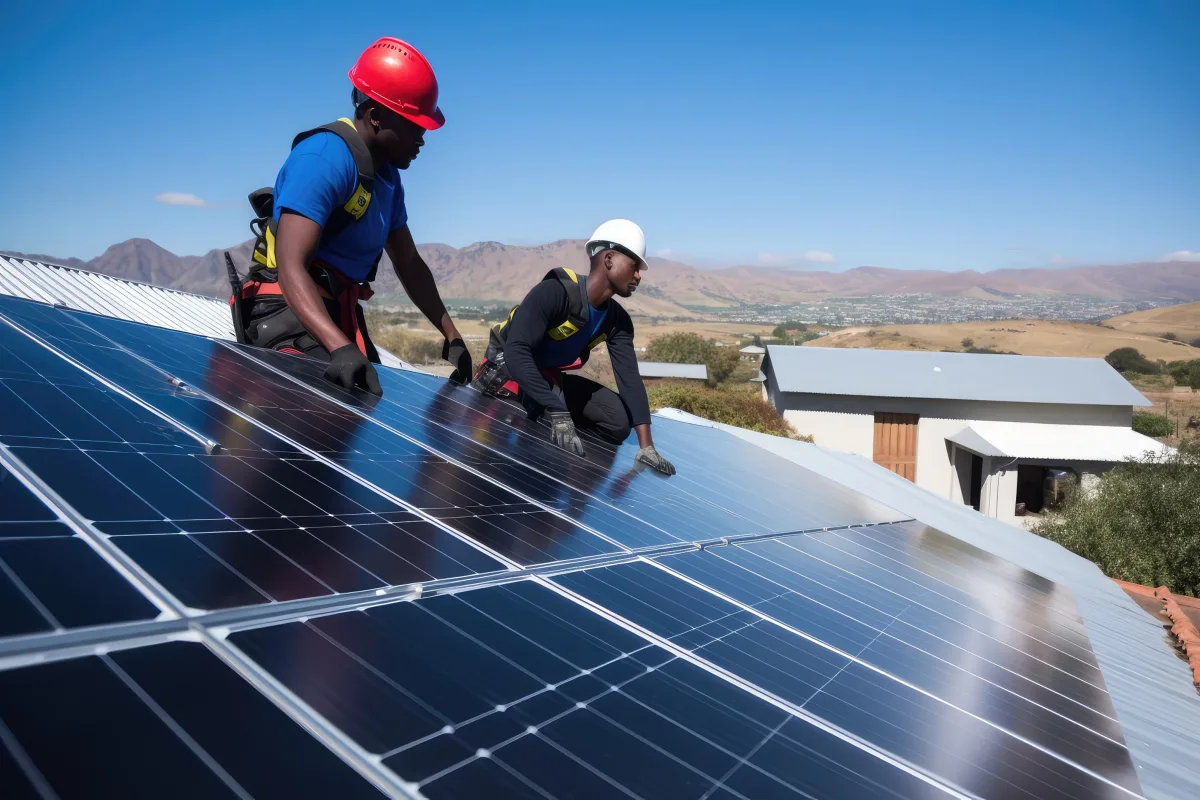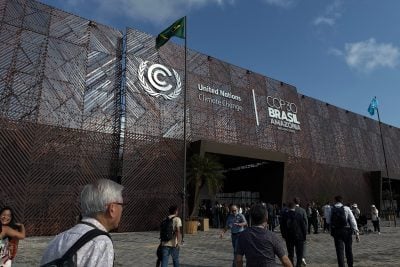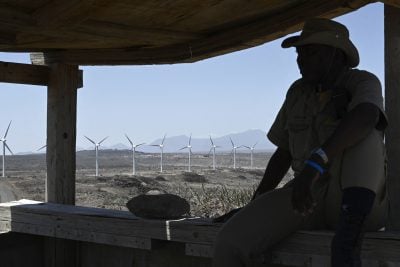South Africa has spent the last several years trapped in a long nightmare of load-shedding. Power outages have become increasingly frequent and prolonged, costing the country 3.2% of its GDP in 2022, according to the South African Reserve Bank.
The basic cause of the problem has been the failure of Eskom, the troubled state-owned utility, to ensure that its electricity generating assets – in particular its fleet of coal-fired power stations – are able to operate effectively. Coal provided around 80% of the country’s electricity until recently, but many of the ageing coal-fired power stations are in a decrepit condition and have proved increasingly prone to breaking down.
As the country tries to claw its way out of the crisis, Eskom’s traditional role as the monopoly supplier of electricity in a centralised power system has broken down. Independent power producers (IPPs) – mostly operating wind or solar facilities – provide a growing share of the country’s grid electricity. And reforms introduced over the past two years have enabled off-grid renewables to play a bigger role in supplying both businesses and residential power users.
There are tentative signs that these measures may be helping to mitigate the severity of load-shedding. However, the emergence of a decentralised energy system may also produce some unintended consequences.
Mixed picture
South Africa’s efforts to attract wind and solar investment from IPPs have enjoyed considerable success. Over 100 projects have been established under the various bidding windows for wind and solar IPP schemes.
It is not just renewables that are being procured through IPP projects, however. Turkish company Karpowership, which operates floating gas-fired power stations in several African countries, was selected as the preferred bidder for a 20-year contract to supply electricity from three of its ‘powerships’ in March 2021.
Following a lengthy regulatory approvals process and various legal challenges, the company received an environmental permit for one of its sites at Richards Bay in KwaZulu-Natal in October.
But the IPP process will not prove to be a panacea for the country’s energy system. This was demonstrated when the most recent bidding round for wind and solar projects ended in fiasco earlier this year. The government announced it would contract just 860 MW in new capacity – less than a fifth of what had originally been planned.
This was largely the result of a lack of capacity in the country’s electricity transmission network. The best wind and solar resources are found in the west of the country, yet the main transmission lines were built to serve coal-fired power stations that are mostly in Mpumalanga and Limpopo provinces.
Related articles
- South Africa’s energy transition faces political roadblocks
- Independent power projects conquer new territory in Africa
- South Africa’s energy reforms mark a step change for Africa
Going off-grid
The IPP programme can only do so much to mitigate Eskom’s disastrous performance in electricity generation. The continued crisis of load-shedding has increasingly led South African businesses and private households to seek their own sources of power.
This is illustrated by the dramatic increase in the country’s imports of solar panels from China. Energy think-tank Ember reports that South Africa imported solar photovoltaic (PV) panels with a capacity of 3.4 GW in the first half of this year. This is equivalent to importing a large coal-fired power station – and marks a remarkable 438% increase from the same period in 2022.
In July 2022, President Ramaphosa liberalised private power generation, enabling businesses to operate a private system of any size without needing a licence from the National Energy Regulator of South Africa. Previously, a licence was needed for systems over 100 MW.
Alison Groves, regional director for Africa at consulting firm WSP, notes that the previous licensing process was “incredibly laborious”. Since the system was liberalised, she says, large businesses such as industrial warehouses and shopping centres are embracing rooftop solar systems. These are substantially cheaper to operate, she adds, compared to diesel generators.
The impact is particularly crucial for the country’s large mining industry.
“It has freed them up to get that emergency power on board with a very little red tape,” she says, adding that mining operations have sometimes been forced by Eskom to shut down operations during peak periods of load-shedding.
Mining and chemicals company Tronox was one of the first companies to take advantages of the liberalised regime. It announced a project to commission power from a 200 MW solar facility, to be constructed by an IPP, in September 2022. Standard Bank financed the transaction.
Rentia van Tonder, Standard Bank’s head of power, notes that solar projects for commercial and industrial (C&I) offtakers can be more attractive for investors than IPP projects. “We’ve seen a lot of investor appetite for the C&I and de-centralised power space,” she says, noting that IPP bidding rounds have often been heavily over-subscribed, which means “sponsors feel that to be able to win those bids, they have to take lower returns, they have to accept more risk.”
Further progress needed
But there is still room for improvement. In September 2022, Tracey McKay, a senior lecturer in the Department of Environmental Science at the University of South Africa, co-authored an academic paper that described the uptake of rooftop solar in South Africa as “pitiful”.
While acknowledging that there has “been a massive uptick in solar installations” recently, McKay points out that this growth has come off a very low base. South Africa continues to lag well behind many other countries on rooftop solar, despite enjoying some of the best conditions in the world for solar energy, she says.
McKay says that a tax break for rooftop solar announced by Ramaphosa in February “wasn’t that much of an incentive”.
Only the costs of the panels themselves, rather than the other costs around installing solar and battery systems, were made tax deductible, McKay says. “The average middle-class person in South Africa may not necessarily have that level of disposable income to instal the panels,” she says.
Municipal mayhem
While the de-centralisation of the power system is clearly beneficial for many South African businesses and households, there are unanswered questions over the long-term impacts of the trend.
Eskom, clearly, is one of the losers. “The only way that Eskom can survive is by charging the customers more and more per unit of electricity,” says McKay. “But the trouble is, the more you charge per unit of electricity, the greater incentive there is to go off-grid or at least try and reduce your electricity consumption.”
But the impact on the country’s cash-strapped municipalities – which have accumulated massive debts through failing to pay fees to Eskom – could be potentially severe. These municipalities have traditionally relied heavily on revenues collected from electricity users to fund basic services that the poor depend on.
“One of the biggest risks with this adoption of PV is it is the wealthy that can do it. And the wealthy are likely to be the ones stepping away from municipalities, which will be catastrophic,” says Groves. “I think if everybody who is wealthy completely withdraws their spending from the municipalities, we will have a collapsed society in no time.”
Part of the solution, she suggests, could come from accelerating the rollout of feed-in tariffs, through which homeowners with rooftop solar systems sell the surplus electricity they generate at peak times to the grid.
Several municipalities have introduced feed-in tariffs schemes, which typically require homeowners to pay a monthly fee, though a national-level scheme is still on the drawing board. As well as increasing the supply of power to the grid, a feed-in tariff generates some revenue for municipalities and reduces the attraction of going completely off-grid for wealthy homeowners.
“I think this is a real opportunity for municipalities to encourage people to produce energy and feed it back into the grid,” says Groves. She adds that “the municipality, the environment, and poorer people will all benefit” from a more effective feed-in tariff regime.
Want to continue reading? Subscribe today.
You've read all your free articles for this month! Subscribe now to enjoy full access to our content.
Digital Monthly
£8.00 / month
Receive full unlimited access to our articles, opinions, podcasts and more.
Digital Yearly
£70.00 / year
Our best value offer - save £26 and gain access to all of our digital content for an entire year!

 Sign in with Google
Sign in with Google 



